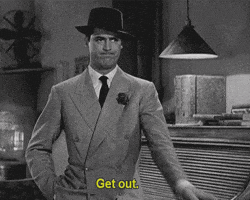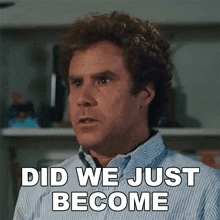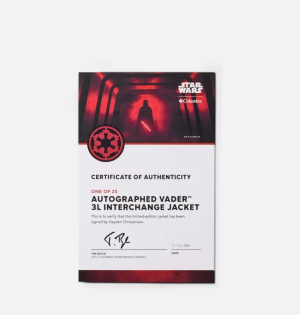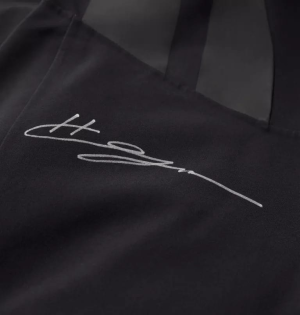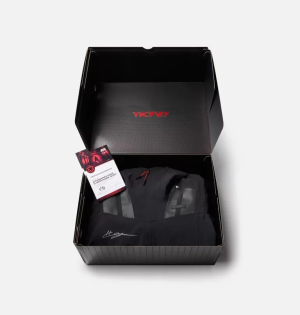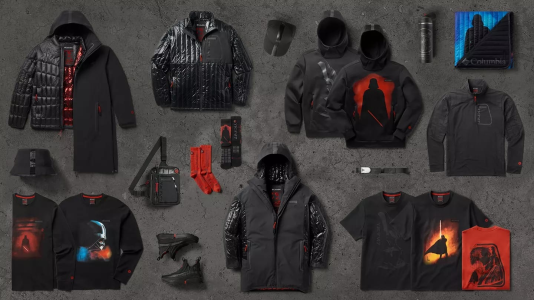Star Wars fans learned Rogue One’s release date long before they knew its name or synopsis. The mystery movie, Lucasfilm said, was slated for December 16, 2016, and it would tell a stand-alone story. Some rumors said it would be about bounty hunters; others missed the mark by even more. Disney had bought a big galaxy, and it had green-lit The Naked City meets Star Wars. The options were infinite.
Any hopes that the spin-off would tell a truly self-contained tale, separate from the series’ main through line, faded when we learned that Rogue One would be about the Death Star schematics heist. The Lucasfilm-labeled “anthology” film couldn’t completely stand alone if its climax set up an existing Star Wars story.
Rogue One could have fought for independence by keeping the crossovers scarce. But last week, we discovered that its links to the trilogies are even tighter than anticipated. In one representative scene, Jyn Erso (Felicity Jones) and Cassian Andor (Diego Luna) are searching for Cassian’s contact on Jedha, the planet that serves as the source of the crystals used in both lightsabers and the Death Star’s superlaser. While walking through the dusty streets, Jyn bumps into two familiar figures from the Mos Eisley Cantina — Ponda Baba, the green guy with the scrotum-mouth, and Cornelius Evazan, the doctor with the death sentence in 12 systems who doesn’t like the looks of Luke Skywalker. This time, no limbs are lost, and no character traits are established. The encounter is pure fan service, the sort of Easter egg that makes the costumed segment of the opening-night crowd erupt in applause while the casual fans and their indulgent dates wonder what the fuss is about. It’s also only one of many such moments in Rogue One, despite director Gareth Edwards’s intent to keep the cameos and self-aware winks to a minimum.
No, there’s no opening crawl in Rogue One, which is supposed to send the message that this is something different (even though the movie owes its existence to the crawl that sets the stage for Episode IV). And yes, the obligatory utterance of one of the franchise’s most famous catchphrases — “I have a bad feeling about this” — gets cut off by Cassian and Jyn, as if to suggest that Rogue One is above such self-plagiarism. But both of those omissions only remind us that Rogue One isn’t really an anthology film. It’s a prologue to Episode IV that goes out of its way to tie itself to the series’ surrounding texts. And the movie’s positive reviews and big box-office opening (on the heels of even stronger showings by last year’s Episode VII) confirms that Disney’s Star Wars formula — new, but not too new — is a winning one.
Darth Vader and Mustafar make it into the movie. Bail Organa shows up to allude to Leia and Alderaan and allow Mon Mothma to obliquely bring up Obi-Wan. Red Leader and Gold Leader take part in the battle above Scarif, looking just like they did during their Death Star runs thanks to unused footage from Episode IV. (Edwards said that their on-screen appearance during Rogue One’s first public screening was “the only time during the premiere where I actually punched the air.”) Ships and characters from Star Wars Rebels flit across the periphery of big battles and bustling crowds at the rebel base. There’s even a brief shot of R2-D2 and C-3PO, for no real reason other than to preserve their perfect attendance in Star Wars movies. Other scenes are littered with Star Wars signifiers: Twi’lek dancing girls, Dejarik games, blue milk. And the first non–John Williams Star Wars score, by Michael Giacchino, sounds like a lot like Williams.
All of these callbacks make chronological sense: The movie is set immediately before the beginning of the original trilogy, so it’s only natural that the universe looks largely the same, right down to the ’70s sideburns. Why wouldn’t the Rebel base be at Yavin 4? And why wouldn’t R2 and C-3PO be somewhere inside?
At times, though, the film’s faithfulness to its predecessors is distracting. Grand Moff Tarkin returns, but unlike Mon Mothma and General Dodonna, he hasn’t been recast. Instead, he’s been reincarnated, as Edwards took George Lucas’s joking advice to “do more in the computer” and superimposed Peter Cushing’s face on a living actor’s body. Cushing’s actual cheekbones were already uncanny, but the digitized versions look even less lifelike. The CGI used to reincarnate Cushing (and recreate a young Carrie Fisher) is at once the movie’s most impressive technical feat and its least convincing one: We’re very close to a computer passing the Tarkin test, but we’re not there yet. When Edwards relies on an aging actor to reprise a part, that tactic backfires too. James Earl Jones, who voices Darth Vader, is now 85, and he’s not more machine than man. As a result, his voice sounds so different that an impersonator (or an algorithm) might have come closer to the Vader of old. Vader’s presence is welcome when he’s swatting and slicing rebels aside in one of the film’s final scenes, which looks inspired by a similar sequence in the 2008 video game The Force Unleashed. It’s less essential earlier on, when he gets out of his bacta tank for a gratuitous strangling and a regrettable choke joke.
One might have expected that the first anthology film would go to greater lengths to distinguish itself from the series proper, like a lead singer switching styles for a first solo album. Then again, when the series proper is as beloved and lucrative as Star Wars, there’s more risk and less upside in establishing a separate identity. Thus far, Disney’s Star Wars movies have neatly threaded the needle between so much fan service that new films feel like remakes (unlike Star Trek Into Darkness, which borrowed heavily from Star Trek II: The Wrath of Khan) and so little that casual fans might not be persuaded to see them. Despite the presence of Han, Luke, and Leia in The Force Awakens — as well as the reboot’s structural similarities to A New Hope — Episode VII successfully launched a new core cast (in Rey, Finn, and Kylo) that’s capable of carrying multiple sequels.
Rogue One isn’t quite as adept at creating characters: Although Ben Mendelsohn’s Director Krennic is notable for the blue-collar backstory belied by his all-white attire, the movie’s most memorable voice belongs to K-2SO (Alan Tudyk), a droid whose personality seems directly descended from HK-47, a comedic assassin droid that stole the spotlight in 2003 role-playing game Knights of the Old Republic. Jyn, whose criminal past isn’t fully fleshed out or evident in her actions, feels flatter than Rey. But Rogue One’s leads need only to entertain us for two hours, and they’re up to that task.
That they don’t need to last any longer is a product of the film’s darker tone, which does deviate from previous Star Wars installments (even after extensive reshoots). Rogue One’s Rebellion barely functions; its heroes aren’t squeaky clean. And most radically, Rogue One kills off all of its characters, which sets it apart from almost every mainstream blockbuster, especially those that belong to a kid-friendly franchise. Rogue One’s action is an extension of the original trilogy, but it won’t be nearly as easy to rewatch.
The verdict on whether Rogue One fulfilled the promise of the “anthology” model will likely be split along the lines of preexisting fandom. If you aren’t a Star Wars die-hard, you might have been more intrigued by the prospect of a Star Wars movie that didn’t have Darth Vader, a Death Star, X-wings taking on TIE fighters, and Princess Leia arriving in time to say “hope.” Rogue One’s tendency to fall back on a few favorite motifs might look like laziness, or like marketing-driven decision-making.
But if, like me, you love Star Wars, there’s only so much sadness you can muster about Rogue One’s reluctance to stray further afield. Not only does the movie stack up well with its progenitors, but it also enriches the rest of the series, whether by hinting at the psychological scars Vader’s comeuppance on Mustafar left along with the physical ones, or by filling in a few blanks from Episode IV. In some ways, Rogue One’s handoff to the original trilogy creates confusion: Leia’s insistence on the Tantive IV’s status as a “consular ship” seems even farther-fetched after the ship’s narrow escape from Scarif, and Mon Mothma’s absence from A New Hope and The Empire Strikes Back is extra conspicuous. But Rogue One also resolves a few loose ends — so that’s why Luke is “Red 5” — while adding a deeper significance to old scenes. The rebels’ desperate attack on the Death Star has higher emotional stakes now that we’ve seen the sacrifice it took to acquire the plans. And the Death Star’s vulnerable exhaust port seems less convenient now that we know it’s the product of sabotage, and not just a mistake.
There are many more Star Wars movies to come, and now that Rogue One has gently introduced us to the idea of anthologies, future one-offs might explore less settled territory. A truly stand-alone Star Wars film is worth waiting for. But a prequel this good is a first for Star Wars, too.














